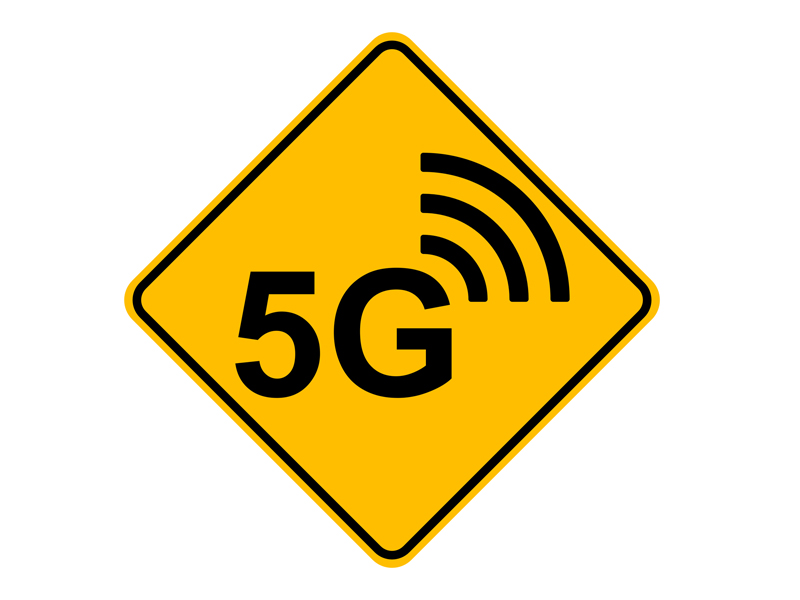Get Easy Health Digest™ in your inbox and don’t miss a thing when you subscribe today. Plus, get the free bonus report, Mother Nature’s Tips, Tricks and Remedies for Cholesterol, Blood Pressure & Blood Sugar as my way of saying welcome to the community!
Is 5G cellular technology something to worry about?

Increased cancer risk. Genetic damage. Memory deficits. Neurological disorders. Structural and functional changes to the reproductive system.
These are some of the heavy prices we pay for advances in wireless technology.
In 1998, a group of 30 scientists appointed by the National Institute of Environmental Health Services (NIEHS) published a 532-page report designating electromagnetic frequencies (EMFs) as a “possible carcinogen.”
Because of pushback from the cell phone industry, it took another ten years and another 13-country study to classify cell phone radiation exposure as “possibly carcinogenic to humans.”
Another name for this designation is a Group 2B classification, the same category as the pesticide DDT, lead, gasoline engine exhaust, burning coal, and dry-cleaning chemicals.
Today, the cell phone industry is in the process of rolling out the next generation of wireless technology, and it promises to be just as dangerous as its predecessors, if not more dangerous.
Every 10 years, a new technology
Every decade or so, the wireless industry introduces a new “generation” of powerful cell phone technology in its devices. With each generation, wireless capabilities have grown.
1G technology (the G stands for “generation”) was the start. If you remember the first cell phones, they only supported voice calls. Texting wasn’t even an option. That was 1G. Voice quality was poor, and there was no security.
Next came 2G, which took cell phones into the world of digital communications. Sending text messages and pictures became routine, and connection speeds were a lot faster.
Related: Cellphones and tablets: Radiation risk?
With the introduction of 3G networks in 1998, cell phones could be used for video calling and mobile internet access. The term “mobile broadband” was first used in reference to 3G technology.
In 2008, the fourth generation, or 4G, was released. With it, you can do the same things you did with 3G, but it also supports gaming services, HD mobile TV, video conferencing and other features that demand high network speeds.
4G is the current standard in cell phone technology. But now, 5G is on the horizon. And the concern about the harmful effects of these technologies continues to grow.
5G: The next generation of danger
With 5G, we’ll get faster data speed, greater connectivity, and more powerful networks. But we’ll also get all the dangers of 4G, plus dangers we don’t even know about yet.
Controlled scientific studies have already shown the possible results of exposure to EMFs, including sperm and testicular damage, changes to neurological and electrical activity in the brain, and cellular DNA damage.
With 5G, we’re flying blind. The technology has not been tested for its effects on human health.
We do know, however, that, because 5G waves can’t travel great distances or pass through objects, antennas will need to be placed every 500 feet or so in order to pick up signals. This means increased exposure to radiofrequency radiation (RFR) for humans.
What you can do to protect yourself
In the late 1990s, the Federal Communications Commission (FCC) adopted exposure limits for RFR. These limits are based on experiments from the 1980s, with rats who exhibited behavior changes when exposed to microwave radiation.
The FCC will soon reaffirm these outdated limits, despite the fact that, since they were adopted, more than 500 studies have found harmful biologic or health effects from exposure to RFR at intensities lower than were originally deemed harmful.
In response, a group of 250 doctors and scientists from 43 countries, including the United States, have signed the 5G Appeal, calling for a delay in deploying all 5G technology until more is known about its risks.
In the meantime, even if you are a cell phone user (and who isn’t these days?), there are things you can do to minimize the health risks that come with RFR exposure:
- Use airplane mode as often as possible. This includes while you’re sleeping. Airplane mode turns off cellular, Wi-Fi, and Bluetooth. This is especially important while you’re in a fast-moving car, bus, or train, when your phone will put out more RF energy as it switches connections from one cell tower to the next.
- Trade in your Bluetooth headset for an Air Tube headset. Bluetooth headsets emit high levels of radiation directly into your ear. Instead, use an air tube headset. Air tube headsets convert the electrical signal into harmless airwaves. An air tube type hands-free kit can reduce radiation significantly.
- Only use your phone when there’s good reception. It emits more radiation when it’s struggling to find a signal.
- Don’t sleep with your cell phone near you. In fact, get an alarm clock and forego using your phone as a wake-up device altogether.
- Use the speakerphone to keep the phone as far from your head and body as possible.
Editor’s note: Potent natural cancer fighters exist in nature. And you can have them all at your fingertips! That’s because we’ve scoured through the research and compiled the best natural ways to avoid and beat cancer, including minerals, herbs, supplements, foods and proven therapies allowed in other countries — but denied to you by American mainstream medicine — all into one comprehensive cancer guide, Surviving Cancer! For a preview, click here!
Sources:
- We Have No Reason to Believe 5G Is Safe — Scientific American
- 1G, 2G, 3G, 4G, & 5G Explained — Lifewire
- Wi-Fi is an important threat to human health — Environmental Research
- The 5G Appeal — 5gappeal.eu













